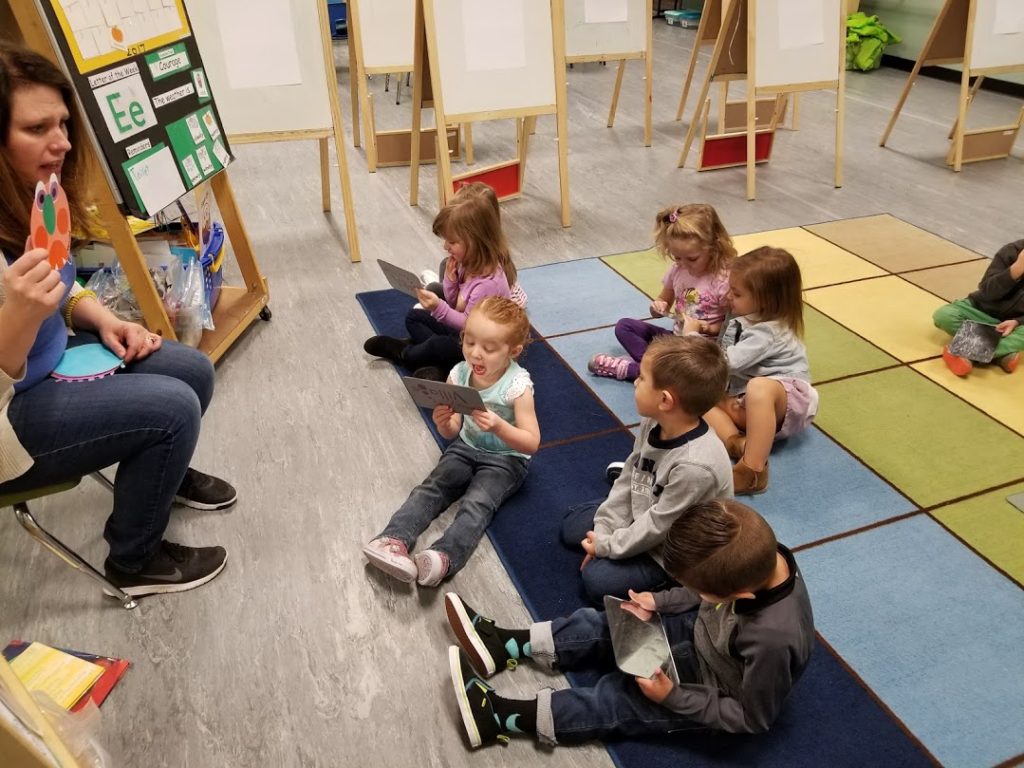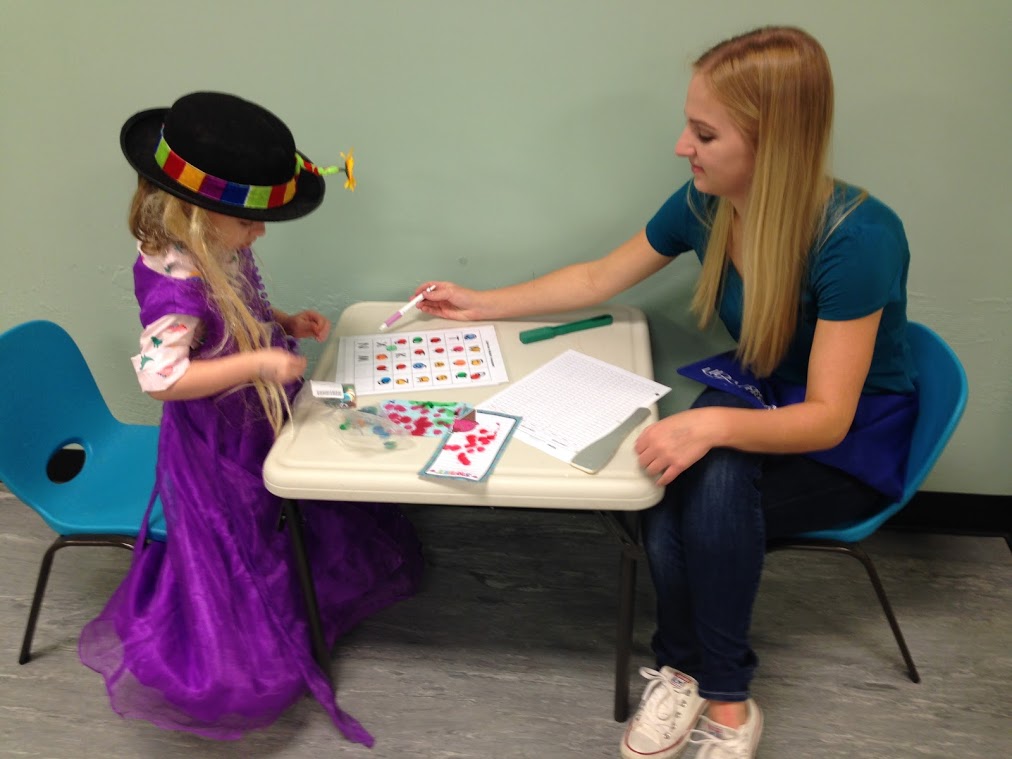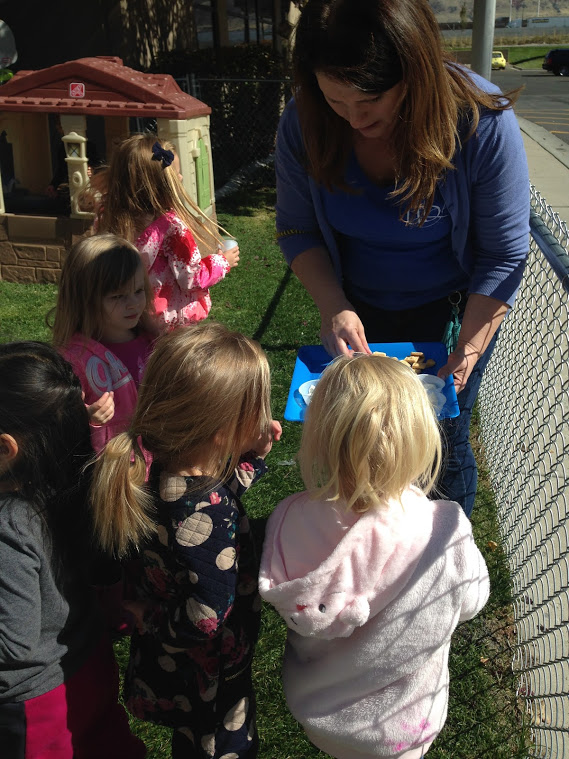Your child is always watching and listening, soaking up language and communication skills at the speed of light. And did you know that in those first early years, the interactions your child has with adults will help set the stage for how well your child will learn? Along with your child’s preschool teachers, you can have a hugely positive impact on your child’s speech and language development — giving your child the gift of academic (and life!) confidence.
“Children who develop strong language and communication skills are more likely to arrive at school ready to learn. They also are less likely to have difficulties learning to read and are more likely to have higher levels of achievement in school.”
And children who can communicate their needs, wants, and interests have an easier time engaging with those around them. Plus, it’s simply more fun for a child when he can be a full participant in what’s going on!
The first five to six years of life are a sensitive period for developing language skills, and you can make the most of those years by promoting high-quality language interactions. Read on to find out how.
Stages of Language Development
When children are infants and babies, they understand far more words than they can speak. By the end of their first year, they’re experts at pseudo-language — that is, their babbling actually mimics their native language. Next, they move on to single words, or holophrases, and those little smarties can use pointing, emphasis, and more to indicate different meanings of the word.
Between 18 and 20 months, children have a vocabulary of about 300 words and begin putting two-word sentences together, like, “Eat banana.” Soon, their sentences get a bit longer and indicate more meaning. “Where cat go?”
The ball really gets rolling after this, and by age 3, children have a vocabulary of about 1,000 words and can speak in full sentences with adults about ideas, needs, desires, and more. They begin to understand grammar rules, and they make a lot of sense (most of the time!).
By about age 6, children have a vocabulary between 8,000 and 14,000 words, and they continue to improve pronunciation, understanding, and abilities.
Are You Concerned About Your Child’s Speech and Language Development?
As parents, we’re always worried about our kids. It’s easy to compare your child to one of his preschool classmates or one of her best friends. It’s wise to pay attention to warning signs, but getting worked up over comparisons will only cause you and your child stress.
Instead, keep an eye out for these signs of speech and language development in your preschool-aged child:
Understanding
- Struggling to understand what gestures mean
- Having a hard time following directions
- Having trouble answering questions
- Struggling to identify objects and pictures
- Struggling to take turns when talking with others
Talking
- Having a hard time asking questions
- Struggling to name objects
- Having trouble using gestures
- Having a hard time putting words together into sentences
- Struggling to learn songs and rhymes
- Having trouble using correct pronouns, like “she” or “they”
- Having trouble knowing how to start a conversation and keep it going
Early reading and writing
- Having trouble with holding a book right side up
- Struggling to look at pictures in a book and turn pages
- Having trouble telling a story with a beginning, a middle, and an end
- Having a hard time naming letters and numbers
- Struggling to learn the alphabet
If you’re concerned about your child’s speech and language development, talk with her preschool teacher and/or doctor, and begin working with a speech language pathologist.
How to Encourage Speech Language Development
If your child has delays, his speech language pathologist will give you specific activities to do. But whether your child struggles or not, the following activities can help your child develop strong speech and language skills — and they help to form bonds between the two of you as well!
Talk
- Talk a lot. From the time your child is a baby, keep a dialogue going. Describe what you see and what you’re doing, ask your baby questions, and respond when your baby responds. As your child grows, continue to talk — and actually listen.
- Pause what you’re doing when your child talks to you and make eye contact to model good listening behavior.
- Encourage language, in addition to gestures your child may be using to communicate.
- Ask questions that give your child a choice.
- Point out silly things in books and have your child tell you why those things are silly.
- Have your child explain what’s happening in a picture book or family photo.
- Sing songs and make music.
- Read, read, read! Read picture books, cereal boxes, store signs, and more. Just read.
- Discuss the stories you read.
- Sing nursery rhymes together.
- Tell stories to each other.
- Have your child retell or act out a story you’ve read.
- Ask your child what he likes about the story.
As you make language and speech development a priority, many of these ideas will become second nature to you. But no matter what, we’re pretty sure you’ll always be amazed by the things your preschooler says!
At UDA Creative Arts Preschool, we encourage our students to develop their language and speech abilities throughout each day as we go about our multisensory activities. Our teachers are trained in listening and encouraging children to increase their speaking abilities, and we love helping our children succeed. Give us a call at (801) 523-5930 to schedule a tour and see the preschool in action.



